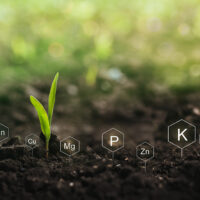 Purdue University - Extension - Forestry and Natural Resources
Purdue University - Extension - Forestry and Natural Resources
Got Nature? Blog
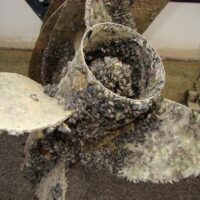 Wild Bulletin, Indiana DNR Fish & Wildlife email newsletter, Help stop the spread of aquatic invasive species: DNR and several Indiana conservation organizations gathered to take part in the fourth annual Great Lakes Aquatic Invasive Species Landing Blitz from June 24th to July 10th. Staff and volunteers were at state parks helping boaters, anglers and other water enthusiasts check their watercraft and other equipment for aquatic invasive species, along with educating them on preventive measures.
Wild Bulletin, Indiana DNR Fish & Wildlife email newsletter, Help stop the spread of aquatic invasive species: DNR and several Indiana conservation organizations gathered to take part in the fourth annual Great Lakes Aquatic Invasive Species Landing Blitz from June 24th to July 10th. Staff and volunteers were at state parks helping boaters, anglers and other water enthusiasts check their watercraft and other equipment for aquatic invasive species, along with educating them on preventive measures.
Aquatic invasive species are plants, animals, and other organisms that are not native to Indiana waters and have the potential to cause harm. These species are concerning because they outcompete native species, threaten human health, change and degrade the ecosystem, and/or require intense maintenance and monitoring.
Most invasive species find their way to Indiana through human behaviors. Modern transportation brings goods including invasive species from all around the world in a matter of hours or days. Some exotic pets or plants used in aquariums or water gardens escape into the wild and if they are adapted to Indiana’s conditions, they can become invasive. Boats and ships moving from waterbody to waterbody can spread invasives. Some invasives were brought to the U.S. intentionally as bio-controls for other invasives; others were introduced as game or food species.
Invasive species can be very expensive or impossible to control. For instance, Indiana spends an estimated $1 million per year in public waters to chemically control Eurasian watermilfoil, an invasive water plant that can shade out native species and interferes with boating and fishing. The damage to sport fisheries and commercial resources from AIS can be serious.
To learn how to stop “hitchhikers” and to learn more about aquatic invasive species view IN DNR: Aquatic Invasive Species.
Resources:
Invasive Mussels, IN DNR Fish and Wildlife
Aquatic Invasive Species in the Great Lakes: The Quagga Mussel, Purdue Extension – Forestry & Natural Resources (FNR) Got Nature? Blog
Aquatic Invaders in the Marketplace, Illinois-Indiana Sea Grant (IISG)
Invasive Species, Playlist, Purdue Extension – FNR YouTube Channel
What are invasive species and why should I care?, Got Nature? Blog, Purdue Extension – Forestry and Natural Resources
Report Invasive Species, Purdue Invasive Species
The GLEDN Phone App – Great Lakes Early Detection Network
EDDMaps – Early Detection and Distribution Mapping System
Indiana Department of Natural Resources: Invasive Species
Indiana Invasive Species Council
Cooperative Invasive Species Management Area (CISMA)
Great Lakes Sea Grant Network (GLERL), NOAA – Great Lakes Environmental Research Laboratory
A Field Guide to Fish Invaders of the Great Lake Regions, Illinois-Indiana Sea Grant (IISG)
Purdue Researchers Get to the Bottom of Another Quagga Mussel Impact, Illinois-Indiana Sea Grant (IISG)
Invasive plants: Impact on Environment and People, The Education Store, Purdue Extension’s resource center
Protect Your Waters, U.S. Fish and Wildlife Service & U.S. Coast Guard
Nongame and Endangered Wildlife, Indiana Department of Natural Resources
Indiana Department of Natural Resources (IN DNR) – Fish and Wildlife
Illinois-Indiana Sea Grant Newsroom: Many Great Lakes communities that have carried the burden of legacy pollution for decades have an opportunity for a new lease on life when local waterways are finally cleaned up. A new video series features five cities along waterways deemed Areas of Concern (AOCs) that are in various stages of the cleanup process and are experiencing revitalization.
Historically, the Great Lakes region was a center of industry—steel, leather and lumber, to name a few—that eventually shut down or moved elsewhere as economies and priorities changed. Left behind in these waters was a soup of contamination, leaving degraded waterways and depressed communities.
In the United States and Canada, dozens of sites were identified as AOCs in the Great Lakes Water Quality Agreement, and over the years, many have undergone remediation.
The U.S. EPA Great Lakes National Program Office (GLNPO) has provided leadership throughout the cleanup process, which involves dredging or capping contaminated sediment. Even before the cleanup and subsequent restoration, local agencies and organizations have a seat at the table to discuss processes and priorities.
Funding is often a partnership between the federal government, in the form of the Great Lakes Legacy Act (now through the Great Lakes Restoration Initiative), and state, regional and local stakeholders.
The videos feature five cities—Duluth, Minnesota; Muskegon, Michigan; Sheboygan, Wisconsin; Ashtabula, Ohio; and Buffalo, New York—that have had some or all of their contaminated sites cleaned up and ecosystems restored. Local government representatives, business owners and residents share the impact of this work on recreation, tourism, economic development, housing and quality of life in the area.
For full article and videos > > >
About IISG: These are trying times for the environment. Climate change and other concerns such as population growth, aquatic invasive species, contaminated waters, and loss of natural habitat, the southern Lake Michigan region faces many challenges. Illinois-Indiana Sea Grant (IISG), with its unique mandate to bring the latest science to those who can best use the information, serves a critical role in empowering people to solve problems in sustainable ways. The program is funded through National Oceanic and Atmospheric Administration (NOAA), the University of Illinois and Purdue University, but IISG also works in partnerships with key organizations, institutions, and agencies in the region to reach more audiences and multiply opportunities for success. IISG brings together scientists, educators, policy makers, community decision makers, outreach specialists, business leaders, and the general public to work towards a healthy environment and economy.
Resources
Center For Great Lakes Literacy (CGLL), Website
Ask An Expert: Hot and Cold, Video, Purdue Extension – Forestry and Natural Resources YouTube channel
Informing the Development of the Great Lakes Region Decision Support System, The Education Store, Purdue Extension’s resource center
Urban Best Management & Low Impact Development Practices, The Education Store
Improving Water Quality Around Your Farm, The Education Store
New website: Eat Midwest Fish, Got Nature? Blog, Purdue Extension – Forestry and Natural Resources (FNR)
Scientists bring the Great Lakes to students learning from home, Got Nature? Blog
Adaptations for Aquatic Amphibians Activity 2: Water Quality Sneak Peak, Purdue Nature of Teaching
Illinois-Indiana Sea Grant (IISG)
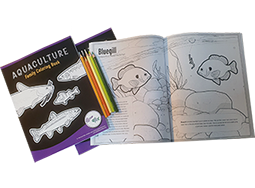
This print-your-own coloring book provides a fun and active way for children and adults to learn about the many kinds of aquatic animals raised on farms for aquaculture. Each spread highlights one species, pairing a beautifully illustrated coloring page with accompanying text for advanced and beginning readers with information about fisheries, recreational fishing, and cooking tips.
This publication is a collaborative project of Illinois-Indiana Sea Grant, the North Central Regional Aquaculture Center, University of Illinois Extension, and Purdue University’s Department of Forestry and Natural Resources.
To receive the free download for the Aquaculture Family Coloring Book visit The Education Store.
About the Author
Amy Shambach is Illinois-Indiana Sea Grant’s (IISG) aquaculture marketing outreach associate who works with the aquaculture industry in the USDA’s North Central Regional Aquaculture Center. Her work focuses on the demand side of domestic farm raised seafood products. She provides outreach and extension services to producers, potential producers, and consumers. Along with Dr. Kwamena Quagrainie, producers, aquaculture associations, and consumers, she works to determine the needs of stakeholders. View the Aquaculture Family Coloring Book Development Team with the free download of the book.
Resources:
Walleye Farmed Fish Fact Sheet, The Education Store
Pacific White Shrimp Farmed Fact Sheet, The Education Store
Yellow Perch Farmed Fish Fact Sheet, The Education Store
Tilapia Farmed Fish Fact Sheet, The Education Store
Rainbow Trout Farmed Fish Fact Sheet, The Education Store
American Paddlefish, The Education Store
Eat Midwest Fish, Illinois-Indiana Sea Grant online resource hub
Illinois-Indiana Sea Grant (IISG), Illinois-Indiana Sea Grant
Amy Shambach, Aquaculture Marketing Outreach Associate
Purdue Department of Forestry and Natural Resources/Illinois Indiana Sea Grant Program
Lawn to Lake Midwest is a great resource as the experts share each month care tips on how to have a healthy lawn all year long while using natural lawn care practices. For the month of May check out the things to watch out for and why testing your soil is important.
You will also find resources for more options for a sustainable lawn:
- Take the Natural Lawn Care Quiz and see where you are at with your lawn care practices.
- Take a look at some simply ways to incorporate more natural lawn care practices.
- If you’re ready, jump into the weeds to explore even more sustainable lawn management practices.
- Find answers to commonly asked lawn care questions.
Resources:
Forest Improvement Handbook, The Education Store
Turfgrass Science, Department of Horticulture & Landscape Architecture
Turfgrass Insect Management, The Education Store
Tree Planting Part 1: Choosing a Tree, Video, The Education Store
Purdue Turf Doctor app for Apple iOS, Apple App Store
Illinois-Indiana Sea Grant (IISG)
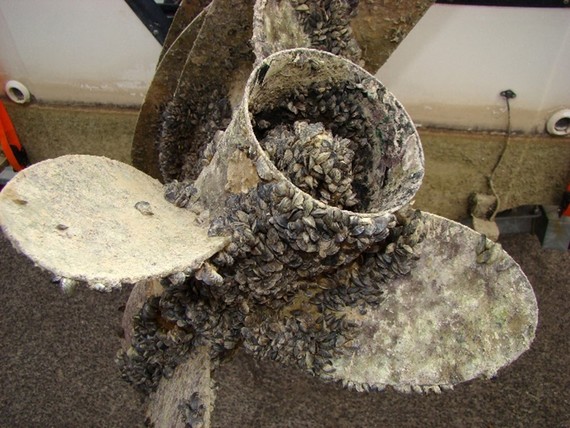 Wild Bulletin, Indiana Department of Natural Resources: As you prepare your boat or recreational equipment to get back on the water this spring, remember to look for aquatic hitchhikers. Zebra mussels, aquatic plants like Eurasian watermilfoil or starry stonewort, and many other invasive species continue to be a threat to Indiana’s waters by degrading fish habitat and negatively affecting recreational boating and fishing. The most common locations where plants, mussels, and animals hitch a ride include:
Wild Bulletin, Indiana Department of Natural Resources: As you prepare your boat or recreational equipment to get back on the water this spring, remember to look for aquatic hitchhikers. Zebra mussels, aquatic plants like Eurasian watermilfoil or starry stonewort, and many other invasive species continue to be a threat to Indiana’s waters by degrading fish habitat and negatively affecting recreational boating and fishing. The most common locations where plants, mussels, and animals hitch a ride include:
- Transom well near the drain plug
- Axle of the trailer
- Lower unit and propeller on the boat motor
- The rollers and bunks that guide the boat onto the trailer
- Anchor and lines
- Bait bucket and live well
Boat owners are asked to drain water from bait buckets, live wells, and boats before leaving the boat landing; leave drain plugs out while travelling on land; clean and dry anything that came in contact with water; and dispose of unwanted bait in the trash. Learn more about aquatic invasive species and how to prevent their movement.
Learn how to stop aquatic hitchhikers.
Find more information about aquatic invasive plants and aquatic invasive invertebrates. Subscribe and receive the Wild Bulletin, Indiana Department of Natural Resources.
Resources:
Invasive plants: Impact on Environment and People, Purdue Extension – Forestry and Natural Resources (FNR)
Report Invasive Species, Purdue Invasive Species
The GLEDN Phone App – Great Lakes Early Detection Network
EDDMaps – Early Detection and Distribution Mapping System
Indiana Department of Natural Resources: Invasive Species
Indiana Invasive Species Council
Cooperative Invasive Species Management Area (CISMA)
Aquatic Invasive Species in the Great Lakes: The Quagga Mussel, Purdue Extension – FNR
Lampreys, Indiana Division of Fish and Wildlife’s Animal Informational Series
Aquatic Invaders in the Marketplace, Illinois-Indiana Sea Grant (IISG)
Great Lakes Sea Grant Network (GLERL), NOAA – Great Lakes Environmental Research Laboratory
Purdue Researchers Get to the Bottom of Another Quagga Mussel Impact, Illinois-Indiana Sea Grant (IISG)
Protect Your Waters, U.S. Fish and Wildlife Service & U.S. Coast Guard
Nongame and Endangered Wildlife, Indiana Department of Natural Resources
Indiana Department of Natural Resources
In this episode of A Moment in the Wild, wildlife technician Zach Truelock introduces you to the southern two-lined salamander, a member of the lungless salamander family, which true to their name do nearly all of their respiration through their skin.
If you have any questions regarding wildlife, trees, forest management, wood products, natural resource planning, or other natural resource topics, feel free to contact us by using our Ask an Expert web page.
Resources
Question: Which salamander is this?, Got Nature? Blog, Purdue Extension – Forestry and Natural Resources
Salamanders of Indiana Book, The Education Store, Purdue Extension resource center
Amphibians: Frogs, Toads, and Salamanders, Purdue Nature of Teaching
The Nature of Teaching: Adaptations for Aquatic Amphibians, The Education Store, Purdue Extension resource center
Hellbender ID, Playlist, Purdue Extension – Forestry and Natural Resources YouTube Channel
A Moment in the Wild, Playlist, Purdue Extension – FNR YouTube Channel
Help the Hellbender, YouTube Playlist & Website
Zach Truelock, Hellbender Technician
Purdue University Department of Forestry and Natural Resources
Rod Williams, Assistant Provost for Engagement/Professor of Wildlife Science
Purdue University Department of Forestry and Natural Resources
Dr. Rod Williams‘ hellbender research, the Purdue rearing lab and more than 12 years of the lab’s work are featured in a new documentary, Hellbender in the Blue,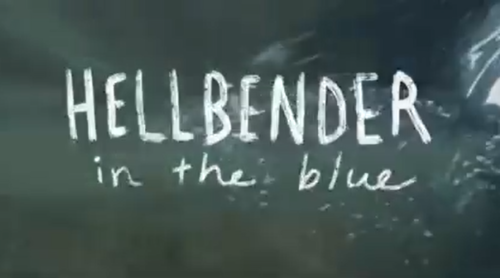 produced by Teardrop Pictures.
produced by Teardrop Pictures.
The film premiered on January 12 at the Kan-Kan Cinema and Brasserie in Indianapolis and is now available to purchase and stream through Vimeo on Demand. Hellbender in the Blue is also heading out on the festival tour, including the Indiana Humanities Waterways Film Tour.
The Indiana Humanities Waterways Film Tour is a nine-city tour featuring six short documentary films about Indiana’s waterways. The films feature stories told by individuals from across the state and highlight their diverse relationships with water. Screenings are free and open to the public, although advance registration is requested. Select events will also include a panel featuring the filmmakers prior to the screening.
- Thursday, March 31, 6 p.m. CT/7 ET; New Harmony Antheneum, 401 Arthur St., New Harmony, IN 47631
- Tuesday, April 5, 6 p.m. ET; Jefferson County Public Library, 420 W. Main St., Madison, IN 47250
- Thursday, April 7, 8 p.m. ET; Taggart Amphitheatre (outdoor screening), 1856 Burdsal Pkwy., Indianapolis, IN 46208
- Tuesday, April 19, 6 p.m. ET; Fowler Theatre, 111 E. 5th St., Fowler, IN 47944
- Wednesday, April 20, 6:30 p.m. ET; Strand Theatre, 221 S. Main St., Kendallville, IN 46755
- Friday, April 29, 7 p.m. CT/8 p.m. ET; Marshall J. Gardner Center for the Arts, 540 S. Lake St., Gary, IN 46403
- Wednesday, May 11, 6:30 p.m. ET; Harrison County Arts, 113 E. Beaver St., Corydon, IN 47112
- Tuesday, May 17, 6:30 p.m. ET; Studebaker 112, 635 S. Lafayette Blvd., South Bend, IN 46601
- Tuesday, June 22, 6:30 p.m. ET; Richmond Art Museum, 350 Hub Etchison Pkwy., Richmond, IN 47374
The soundtrack to Hellbender in the Blue is available on Spotify, care of Eric Salazar, also known as @theclarinetguy on Instagram.
Purdue Forestry and Natural Resources’ involvement in the Hellbender in the Blue project began in April 2020, when Katelyn Calhoun, a documentary film maker with Teardrop Pictures, contacted Williams and research biologist/extension wildlife specialist Nick Burgmeier, regarding her desire to make a film about hellbenders in Indiana, as well the efforts Purdue, The Nature Conservancy and others have undertaken to protect/restore their populations and the efforts to remove dams from their habitat. The eventual goal is to make a more wide-ranging documentary about hellbenders throughout their range.
“We hope the film helps reach a broader audience to expand awareness of the project and encourages people to support efforts to protect hellbenders and Indiana’s water resources,” Burgmeier said.
Resources:
A Moment in the Wild, Playlist, Purdue Extension – Forestry and Natural Resources YouTube Channel
Improving Water Quality by Protecting Sinkholes on Your Property, Video, Purdue Extension – FNR YouTube Channel
Question: Which salamander is this?, Got Nature? Blog, Purdue Extension – Forestry and Natural Resources
Is it a Hellbender or a Mudpuppy?, Got Nature? Blog
Amphibians: Frogs, Toads, and Salamanders, Purdue Nature of Teaching
Help the Hellbender, Playlist & Website
The Nature of Teaching: Adaptations for Aquatic Amphibians, The Education Store, Purdue Extension resource center
Hellbenders Rock!, The Education Store
Help the Hellbender, North America’s Giant Salamander, The Education Store
Wendy Mayer, FNR Communications Coordinator
Purdue University Department of Forestry and Natural Resources
Rod Williams, Assistant Provost for Engagement/Professor of Wildlife Science
Purdue University Department of Forestry and Natural Resources
Nick Burgmeier, Research Biologist and Wildlife Extension Specialist
Purdue Department of Forestry and Natural Resources
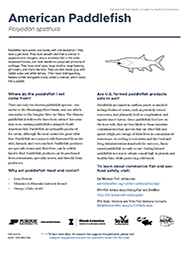
This publication American Paddlefish FNR-625-W is the fifth in a series of consumer guides that describe fish and shellfish farmed in the Midwest region of the United States. The fact sheet also includes culinary characteristics, cooking tips and a recipe for Zesty Grilled Paddlefish.
Paddlefish lack scales and bones, with one exception— the have a jawbone. They have smooth skin that is similar in appearance to sturgeon, also a scaleless fish in the order Acipenseriformes, and have skeletons comprised primarily of cartilage. They have small eyes, large mouths, large tapering gill covers, and shark-like tails. They are dark bluish gray, with lighter sides and white bellies. Their most distinguishing feature is their elongated snout, called a rostrum, which looks like a paddle.
There are only two known paddlefish species- one native to the Mississippi River basin, and one which was native to the Yangtze River in China. The Chinese paddlefish is believed to have been extinct2 for some time now, making paddlefish a uniquely North American fish. Paddlefish are primarily produced for caviar, although the meat makes for great table fare. Paddlefish are commercially harvested from the wild, farmed, and even ranched. Paddlefish products are specialty items and, therefore, can be a little hard to find. Paddlefish products can be purchased from restaurants, specialty stores, and directly from producers.
Resources:
Walleye Farmed Fish Fact Sheet, The Education Store
Pacific White Shrimp Farmed Fact Sheet, The Education Store
Yellow Perch Farmed Fish Fact Sheet, The Education Store
Tilapia Farmed Fish Fact Sheet, The Education Store
Rainbow Trout Farmed Fish Fact Sheet, The Education Store
Eat Midwest Fish, Illinois-Indiana Sea Grant online resource hub
Illinois-Indiana Sea Grant (IISG), Illinois-Indiana Sea Grant
Amy Shambach, Aquaculture Marketing Outreach Associate
Purdue Department of Forestry and Natural Resources/Illinois Indiana Sea Grant Program
In this episode of A Moment in the Wild, wildlife technician Zach Truelock introduces you to another member of the lungless salamander family, the cave salamander. This species, identifiable by its bright orange/red coloration covered in black spots, lives in caves as well as crevices along streams, rocky bluffs and springs.
If you have any questions regarding wildlife, trees, forest management, wood products, natural resource planning, or other natural resource topics, feel free to contact us by using our Ask an Expert web page.
Resources
Question: Which salamander is this?, Got Nature? Blog, Purdue Extension – Forestry and Natural Resources
Salamanders of Indiana Book, The Education Store, Purdue Extension resource center
Amphibians: Frogs, Toads, and Salamanders, Purdue Nature of Teaching
The Nature of Teaching: Adaptations for Aquatic Amphibians, The Education Store, Purdue Extension resource center
Hellbender ID, Playlist, Purdue Extension – Forestry and Natural Resources YouTube Channel
A Moment in the Wild, Playlist, Purdue Extension – FNR YouTube Channel
Help the Hellbender, YouTube Playlist & Website
Zach Truelock, Hellbender Technician
Purdue University Department of Forestry and Natural Resources
Rod Williams, Assistant Provost for Engagement/Professor of Wildlife Science
Purdue University Department of Forestry and Natural Resources
 With the holidays over the needles are beginning to fall from your natural Christmas tree, continue to spread holiday cheer by returning your tree to nature.
With the holidays over the needles are beginning to fall from your natural Christmas tree, continue to spread holiday cheer by returning your tree to nature.
Jarred Brooke, Extension wildlife specialist, shares a few creative ways you can repurpose and recycle your tree this year.
“Before you throw your used natural Christmas tree in the trash, think about recycling it on your property. Instead of taking up space in the landfill, your tree could decompose naturally while providing cover and food for fish, wildlife or insects,” said Brooke.
No matter how you choose to repurpose your tree, make sure it is free from ornaments and decorations. Do not recycle trees that have been sprayed with “fake” snow or treated with chemicals.
Create a habitat for fish
Throwing used Christmas trees in ponds is a great way to recycle the tree and provide a fish habitat to your pond. The small branches provide hiding spots for small fish to escape from larger predators.
If the pond is frozen with more than four inches of ice, you can drag your tree onto the ice. The tree will fall into place once the ice melts.
You should only add Christmas trees to your ponds or other private ponds with the permission of the pond owner. While they do provide great habitats for fish, they can be a nuisance for fishing as hooks and lines may get caught on branches. It is recommended that you keep trees away from popular fishing areas like docks.
Resources:
Selecting a Real Christmas Tree, Got Nature? Blog, Purdue Extension-Forestry and Natural Resources
A Choose-and-Cut Pine and Fir Christmas Tree Case Study, The Education Store, Purdue Extension’s resource center
Living Christmas Trees For The Holidays and Beyond, The Education Store
Growing Christmas Trees, The Education Store
Selecting an Indiana-Grown Christmas Tree, The Education Store
Forest/Timber Playlist, subscribe to Purdue Extension – Forestry and Natural Resources YouTube Channel
Aquatics & Fisheries, Playlist, Purdue Extension – Forestry and Natural Resources YouTube Channel
Ask an Expert: Pond Wildlife Management, Video, Purdue Extension – FNR YouTube Channel
Ask an Expert: Pond Management: What to Do in Winter, How to Plan for Spring, Video, Purdue Extension – FNR YouTube Channel
Aquatic Plant Management: Identifying and Managing Aquatic Vegetation, The Education Store
Pond and Wildlife Management, Purdue Extension-Forestry and Natural Resources
Jarred Brooke, Wildlife Extension Specialist
Purdue Forestry and Natural Resources
Recent Posts
- 2024-25 Fishing Guide now available – Wild Bulletin
Posted: April 4, 2024 in Alert, Aquaculture/Fish, Aquatic/Aquaculture Resources, How To, Ponds, Wildlife - Look Out for Invasive Carp in Your Bait Bucket – Wild Bulletin
Posted: March 31, 2024 in Alert, Aquaculture/Fish, Aquatic/Aquaculture Resources, Invasive Animal Species, Wildlife - Renew Your Indiana Annual Fishing, Hunting, and Trapping License, MyDNR
Posted: March 28, 2024 in Aquaculture/Fish, Aquatic/Aquaculture Resources, How To, Wildlife - Kwamena Quagrainie Receives Fulbright Specialist Award to Ghana – IISG
Posted: March 27, 2024 in Aquaculture/Fish, Aquatic/Aquaculture Resources, Community Development - Report Your Mudpuppy Observations to Indiana DNR – Wild Bulletin
Posted: February 1, 2024 in Alert, Aquaculture/Fish, Aquatic/Aquaculture Resources, How To, Wildlife - Help the Hellbender Team Honored as Friends of Conservation
Posted: January 28, 2024 in Aquaculture/Fish, Aquatic/Aquaculture Resources, Wildlife - New Indiana DNR Webinar, Conservation of the Hellbender: Experts Unite
Posted: January 24, 2024 in Aquaculture/Fish, Aquatic/Aquaculture Resources, Webinar, Wildlife - Publication- Bluegill Farmed Fish Fact Sheet
Posted: December 15, 2023 in Aquaculture/Fish, Aquatic/Aquaculture Resources, Publication, Wildlife - Wildlife Wins of 2023, Wild Bulletin
Posted: December 8, 2023 in Aquaculture/Fish, Aquatic/Aquaculture Resources, How To, Safety, Wildlife - Invasive Carp Removal on the Ohio River, Wild Bulletin
Posted: in Alert, Aquaculture/Fish, Aquatic/Aquaculture Resources, Invasive Animal Species, Wildlife
Archives
Categories
- Alert
- Aquaculture/Fish
- Aquatic/Aquaculture Resources
- Ask the Expert
- Christmas Trees
- Community Development
- Disease
- Drought
- Forestry
- Forests and Street Trees
- Gardening
- Got Nature for Kids
- Great Lakes
- How To
- Invasive Animal Species
- Invasive Insects
- Invasive Plant Species
- Land Use
- Natural Resource Planning
- Nature of Teaching
- Plants
- Podcasts
- Ponds
- Publication
- Safety
- Timber Marketing
- Uncategorized
- Urban Forestry
- Webinar
- Wildlife
- Wood Products/Manufacturing
- Woodland Management Moment
- Woodlands
